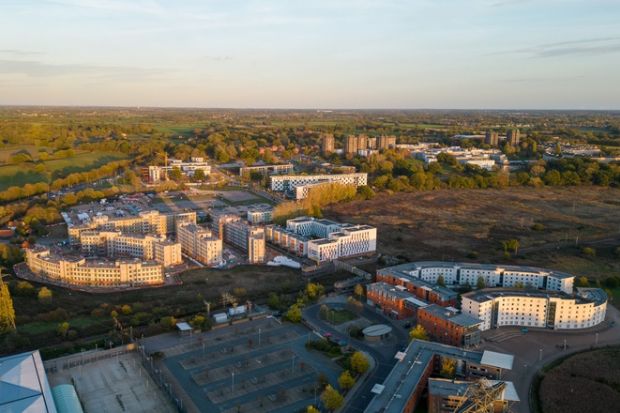Access to good quality housing is part of a living and learning experience that supports educational attainment and career aspirations. Yet a recent report predicted a shortfall of 620,000 student beds by 2026 across the UK amid rising developer costs in an era of high inflation and interest rates.
The availability of affordable student housing varies across the country, but for campus-based universities such as Essex, Reading and Surrey, the on-site living and learning student experience is an integral feature of our offer.
Meeting the sheer demand for beds is an essential first step in our commitment to providing housing that meets students’ broader needs. At the University of Essex, we have increased capacity at our main Colchester campus by 74 per cent since 2013, with 1,262 new beds available from this month alone, reflecting student number growth of 53 per cent in the same period.
Yet doing so isn’t easy given the impact of inflation on an undergraduate tuition fee cap fixed since 2017 and the effective withdrawal of recurrent capital funding in 2021. This has left universities to fund additional bed spaces from their own resources and/or to work in partnership with purpose-built student accommodation (PBSA) providers.
The risk is that the financial pressures push universities to limit their ambitions to providing “shelter” – understood reductively, rather than as one of the factors that support student success. At Essex, we believe that we must focus not just on the availability of accommodation but also its affordability, suitability and contribution to the student experience.
The Higher Education Policy Institute’s 2020 report on student accommodation noted that while rents had risen by more than inflation, the maximum student loan for living costs rose by only inflation at best, putting pressure on affordability. For a university such as Essex, whose founding vision has aspiration and social mobility at its heart, the prospect that lower-income students will be priced out of a residential experience is devastating.
Hence, we have prioritised student participation in rent-setting processes and have taken action to hold rent increases below inflation and to apply the National Union of Students’ affordability criterion that at least 25 per cent of rooms must be offered for half the maximum loan amount. This has come at a cost of £1.3 million in 2022 and £2.4 million in 2023.
We have also prioritised offering more twin rooms and short-term occupancy options so commuting students can participate in the on-campus living and learning community. In response to the cost-of-living crisis, we have also introduced means-tested accommodation and maintenance bursaries, offering up to £6,000 of additional support for qualifying students, on top of our £4.4 million cost-of-living support package.
The suitability of accommodation reflects a range of factors that go beyond minimum threshold technical codes, including proximity to place of study and accessibility and inclusion for students with different needs and characteristics. It should also reflect the changing shape of student populations, including the balance between undergraduates and postgraduates and between domestic and international students.
Making appropriate changes requires universities to retain sufficient control over their housing stock – with implications for the nature of relationships with PBSA providers. When remedial work was required to accommodation at our Southend campus, for instance, the university was not entitled, as leaseholder, to carry it out ourselves unless we bought out the freehold (which we did).
We know from our experience in Southend – as well as in Loughton, east London – that providing inner-city student housing brings particular challenges. Different again are the challenges facing small campuses, where the proposition for developers is less financially viable. But we must never forget that students’ experience of living matters as much as their experience of learning, particularly as the proportion of 18-year-olds going to university drops – disproportionately among the least well-off.
For universities such as Essex, student housing is also a hub for the delivery of student support services. Coming out of the pandemic, university-led, housing-centred support has been vital to increasing connectedness among a generation of young people who were largely confined to their bedrooms under lockdown, allowing them to transition to adulthood in a safe, supportive and enjoyable environment.
But we must also remember that universities do not exist in a vacuum. Many of the local communities of which we are a part are themselves experiencing an affordable housing crisis. Extending on-campus housing provision in line with planned growth, rather than relying on the private rental sector to take up the slack, demonstrates that we take seriously the impact of the affordable housing crisis and the pressures on local private renters.
Now more than ever, we must work in partnership with PBSA providers and local authorities to lift our sights beyond availability and habitability and to develop values-based student housing standards that respond to the needs of everyone, both on and off campus.
Lorna Fox O’Mahony is professor of property, housing and home at Essex Law School and deputy vice-chancellor at the University of Essex.




